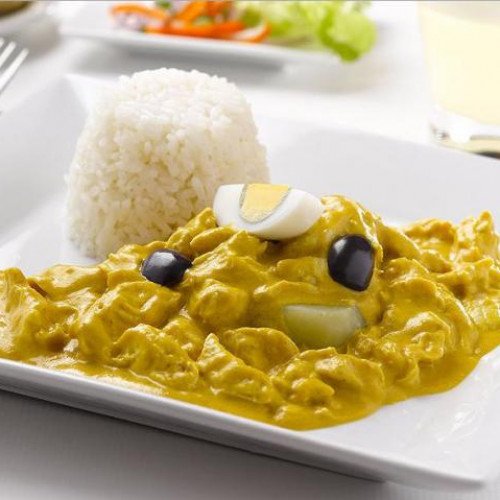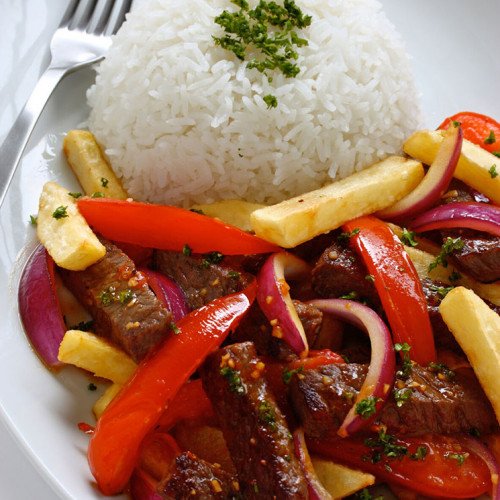Best peruvian dish

Ají de Gallina
Ají de gallina is a Peruvian chicken stew. The dish is considered a popular Peruvian comfort food, and the name translates to "chicken chili" or "hen's chili" in English.[2] Ají de gallina is composed of a sofrito base made by sautéing red onion, garlic, and ají amarillo together, and adding shredded poached poultry and stock. The stew is then thickened with bread soaked in milk or evaporated milk, cheese such as parmesan, and ground nuts such as pecans or walnuts. Ají amarillo ("yellow chili") is a mildly spicy pepper native to South America, common in many Peruvian cuisine dishes. Ají de gallina is typically served with boiled potatoes and white rice, and garnished with black olives and hard-boiled egg. Ají de gallina is believed to have evolved from manjar blanco or white dish, a combination of ground almonds, milk, sugar, and chicken or fish, first introduced to Spain by the Moors prior to the Reconquista.[4][5] While in Europe white dish became a dessert after the Middle Ages (see blancmange), in colonial Peru the stew was combined with indigenous chili peppers to form a savory entree. Oral histories say it was created by former chefs to the French aristocracy fleeing the French Revolution and finding new employment in the Viceroyalty of Peru.[6] It was created using leftover chicken and potatoes, and other variants include using turkey or canned tuna.
Statistics for this Xoptio

Lomo Saltado
Lomo saltado is a popular, traditional Peruvian dish, a stir fry that typically combines marinated strips of sirloin (or other beef steak) with onions, tomatoes, french fries, and other ingredients; and is typically served with rice. The dish originated as part of the chifa tradition, the Chinese cuisine of Peru, though its popularity has made it part of the mainstream culture. The dish is normally prepared by marinating sirloin strips in vinegar, soy sauce and spices, and stir frying these with red onions, parsley, tomatoes, and possibly other ingredients. The use of both potatoes (which originated in Peru) and rice (which originated in Asia) as starches are typical of the cultural blending that the dish represents.[2][3][4][5] In his 2013 article in the Huffington Post UK, British-Peruvian chef Martin Morales called lomo saltado "one of Peru's most loved dishes" and that this dish "shows the rich fusion of old and new worlds. This juicy mixture of beef, onions, tomatoes, aji Amarillo paste and soy sauce sauteed in a large pan (or wok) is one of the many contributions Chinese immigration brought to Peru." He explains, "Lomo Saltado is sometimes known as a Criollo dish but more known as a Peruvian-Chinese dish; a favourite Chifa dish. These are its true roots".[6] According to a 2011 article that was published in the Peruvian newspaper El Comercio, the book "Diccionario de la Gastronomía Peruana Tradicional" published in 2009 by Sergio Zapata Acha, includes an old description for lomo saltado, which fails to mention its Asian influence. Although this doesn't deny the dish's widely accepted Chinese-Peruvian roots, the article's author then ponders possible relations to similar dishes like lomo de vaca and lomo a la chorrillana.